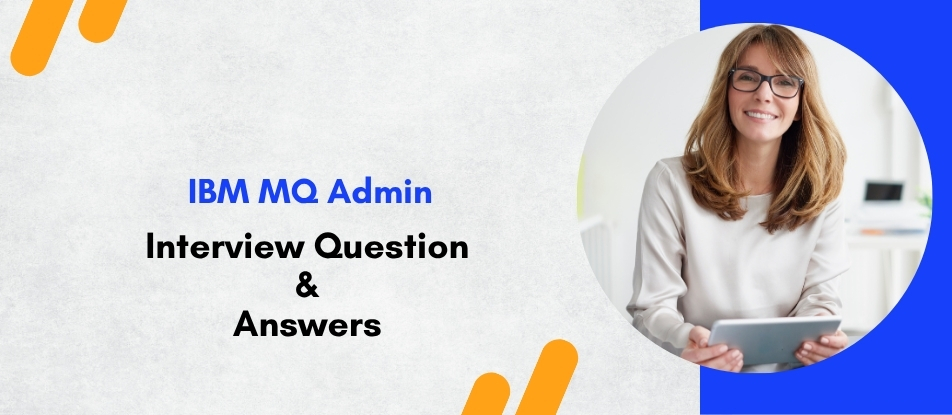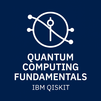
This IBM MQ Admin course equips learners with the skills to manage, secure, and optimize enterprise messaging environments. It covers queue manager setup, channel configuration, clustering, failover strategies, and message routing. Participants learn to implement security controls, monitor system health, analyze logs, and troubleshoot complex communication issues. The training also emphasizes performance tuning, high-availability design, and integration across distributed applications. By the end, learners gain practical expertise to ensure reliable, scalable, and resilient MQ operations within modern enterprise systems.
IBM MQ Admin Training Interview Questions Answers - For Intermediate
1. What is a Transmission Queue in IBM MQ?
A transmission queue is a special local queue used to temporarily store messages destined for a remote queue manager. When an application places a message on a remote queue, MQ routes it to the associated transmission queue, where a sender channel later collects and sends it across the network. Transmission queues ensure asynchronous and reliable message forwarding, especially in distributed topologies.
2. What is an MCAUSER and why is it important?
MCAUSER is an attribute on MQ channels that defines the user identity under which the channel connection operates. It determines the level of access granted to the connecting client or queue manager. Proper configuration of MCAUSER is critical because an incorrect or overly privileged value can expose queues to unauthorized access, posing a significant security risk in production systems.
3. How does IBM MQ support transactions?
IBM MQ supports both local and global transactions to ensure message integrity. Local transactions allow multiple Put and Get operations to be committed or rolled back as a single unit of work. Global transactions, coordinated by a transaction manager such as XA, synchronize MQ operations with database or application logic. This ensures consistency across multiple systems even in the event of failures.
4. What is the difference between Syncpoint and Non-Syncpoint operations?
In Syncpoint mode, MQ operations require explicit commit or rollback from the application, ensuring transactional control. Messages placed or removed under Syncpoint are not finalized until committed. In Non-Syncpoint mode, each MQ operation is immediately finalized without transaction rollback capability. Syncpoint mode is preferred for critical or multi-step processes, while Non-Syncpoint suits simple, lightweight messaging.
5. What is Backout Count and Backout Requeue Queue?
Backout Count tracks how many times an application fails to process a message and rolls it back. When this count exceeds the configured threshold, MQ can redirect the message to a Backout Requeue Queue for further investigation or alternate processing. This mechanism prevents processing loops and helps administrators isolate problematic messages without disrupting the main workflow.
6. What is Message Expiry in MQ?
Message expiry defines how long a message remains valid on a queue. The expiry time is specified in tenths of a second and, once reached, MQ discards the message or moves it to a Dead Letter Queue depending on configuration. Expiry is useful for time-sensitive workloads where stale data should not be consumed by applications.
7. How does MQ ensure high availability?
MQ ensures high availability through features such as multi-instance queue managers, HA clusters, shared storage, and integration with platform-specific failover solutions like PowerHA or Microsoft Failover Clustering. In multi-instance configurations, one instance runs as the active node while another remains standby, automatically taking over if the active instance fails. These mechanisms minimize downtime and protect message continuity.
8. What is a Log Extent and how is it used?
A log extent is one of the files that make up the circular or linear logging system of a Queue Manager. Each extent stores a portion of transactional data necessary for recovery operations. Proper management of log extents, including sizing and count, is essential for ensuring adequate capacity for persistent messaging and maintaining healthy restart behavior during system recovery.
9. What is a Cluster Sender and Cluster Receiver channel?
Cluster Sender (CLUSSDR) and Cluster Receiver (CLUSRCVR) channels are automatically managed channels used within MQ clusters. CLUSRCVR channels allow other queue managers to join and exchange cluster information, while CLUSSDR channels are dynamically created for routing messages within the cluster. They simplify administration by reducing the need for manually creating sender and receiver channel pairs.
10. What is a Linear Log and when should it be used?
Linear logs are a logging method where log files are not reused and provide complete recovery history. They are suited for environments requiring full media recovery, such as large-scale production systems handling critical data. Linear logs demand more storage but enable restoration to any point using tape or disk backups, making them valuable in regulated or audit-focused environments.
11. What is the purpose of CHLAUTH rules?
CHLAUTH rules help secure MQ channels by validating incoming connections based on criteria such as IP address, channel name, and SSL attributes. These rules can block unauthorized IPs, map users to controlled MCAUSER values, or enforce stricter authentication. CHLAUTH adds a security layer that protects queue managers from unauthorized client access or malicious activity.
12. What is a Message Selector?
A message selector allows an application to retrieve only those messages that match specific criteria, such as message properties or custom headers. It avoids unnecessary processing of unrelated messages and is commonly used in JMS-based applications. Selectors help optimize consumption logic when multiple message types share the same queue.
13. How does IBM MQ handle message ordering?
MQ maintains message ordering on a queue based on arrival time unless priority or grouping overrides it. Messages with the same priority follow FIFO order. For scenarios requiring strict sequencing, applications may use message groups, where MQ ensures the entire group is processed in order. Network routing or clustering may influence ordering if messages travel through different paths.
14. What is an MQ Service object?
An MQ Service object defines how the queue manager interacts with external commands or scripts during startup or shutdown. It can run monitoring tools, trigger background processes, or perform custom administrative functions. Service objects help automate operational tasks, improving consistency and reducing manual intervention during routine MQ lifecycle events.
15. How does an MQ Exit work?
MQ Exits are user-written programs that intercept channel communication to implement custom logic such as security checks, data transformation, or authentication. Examples include Message Exits, Send Exits, and Receive Exits. These exits extend MQ functionality but require careful development and testing to avoid performance degradation or instability in channel operations.
IBM MQ Admin Training Interview Questions Answers - For Advanced
1. How does IBM MQ handle message recovery after an unexpected Queue Manager crash?
IBM MQ performs message recovery through its write-ahead logging mechanism, internal checkpoints, and structured restart logic. When a Queue Manager crashes, the recovery process reads the log extents to replay committed transactions and undo partial operations. Persistent messages that were successfully logged before the crash are restored to their queues, while messages involved in incomplete transactions are rolled back to their previous states. The Queue Manager also rebuilds internal control blocks, reloads queue files, and reconstructs buffer pool maps from logs. Channels that were transmitting messages at the moment of failure rely on sequence numbering and acknowledgements to determine whether messages need retransmission. This careful log-driven reconstruction ensures message consistency, atomicity, and durability, even in environments handling millions of messages per hour.
2. In what ways do channel sequence numbers prevent message duplication or loss?
Channel sequence numbers act as safeguards for message ordering and reliability between sender and receiver channels. Each message transmitted across the channel is tagged with a unique, incrementing sequence number. The receiving end validates the sequence number before placing the message on the target queue. If a mismatch occurs, the channel suspends processing and initiates resynchronization. During restart or network failure, the Sender and Receiver MCAs exchange sequence numbers to determine the last successfully acknowledged message. Messages beyond that point are resent, while previously processed messages are suppressed. This handshake mechanism ensures that no gaps or duplicates occur, allowing the system to maintain exactly-once delivery guarantees even in volatile network conditions.
3. Why is linear logging preferred for highly regulated or audit-heavy MQ environments?
Linear logging provides a complete, unbroken history of all persistent message operations, allowing administrators to restore Queue Managers to any historical point using archived logs. Highly regulated environments, such as banking or pharmaceutical industries, often require detailed audit trails for every transactional event. Linear logs are never overwritten, enabling full media recovery even after catastrophic disk failures. In contrast, circular logs overwrite older entries, making certain forms of rollback impossible. Although linear logging requires more disk space and backup management, it ensures that auditors and compliance teams can reliably trace message histories and validate data integrity without risk of log loss or corruption.
4. How does IBM MQ manage flow control in high-throughput systems to avoid resource exhaustion?
MQ employs multiple flow-control mechanisms, including channel batch sizing, batch intervals, sliding-window transmission logic, queue depth thresholds, and kernel-level socket buffering. If queues begin filling rapidly, MQ restricts sender-channel throughput or slows message delivery to prevent queue full conditions. Channel parameters such as BATCHSZ and BATCHINT influence how messages are grouped to optimize network round trips. The MCA dynamically adjusts transmission speed based on acknowledgements and TCP buffer feedback. Queue depth high thresholds trigger alerts, allowing administrators to adjust capacity or throttle upstream applications. These combined mechanisms prevent memory exhaustion, network congestion, and log overflow, ensuring sustainable performance under peak loads.
5. How are inter-cluster message routes resolved when multiple cluster queues exist across several nodes?
When a message is placed on a cluster queue, MQ uses the cluster repository to determine available queue instances and applies workload balancing rules to select a destination. These rules may include channel affinity, round-robin distribution, queue priority, or custom exit logic. The cluster sender channels dynamically create or update routes based on repository data. If multiple paths exist, MQ evaluates channel health, availability, and previous routing to determine the optimal path. Should a cluster queue instance become unavailable, the repository updates propagate through the network, ensuring subsequent messages bypass failed destinations. This dynamic routing mechanism eliminates the need for complex static configuration but requires robust repository synchronization to avoid stale or conflicting routing data.
6. What complexities arise when configuring SSL/TLS for MQ channels, and how are they addressed?
SSL/TLS configuration introduces complexities involving certificate management, cipher suite selection, key store formats, hostname verification, and channel authentication compatibility. Certificates must be issued by trusted authorities, correctly mapped to MCAUSER identities, and regularly rotated to maintain security compliance. Cipher mismatches between endpoints can cause channel failures, requiring coordinated updates. Hostname mismatches trigger handshake failures, demanding strict alignment between certificate CN/SAN attributes and channel definitions. MQ must also integrate TLS settings with CHLAUTH rules and AMS policies. These complexities are addressed through standardized certificate procedures, automated renewal workflows, consistent naming conventions, and thorough pre-deployment testing across all channel endpoints.
7. What is the role of AMS (Advanced Message Security) and how does it complement Transport Layer encryption?
Advanced Message Security provides end-to-end protection by encrypting and digitally signing messages at the application layer, ensuring confidentiality and integrity even when messages move across multiple intermediary systems. Unlike TLS, which only protects data in transit, AMS protects data at rest in queues and logs. This ensures that unauthorized access to disk storage or queue files does not expose message content. AMS also supports granular policies, enabling different security levels per queue or per application. When combined with TLS, AMS forms a layered security model that secures both message storage and transmission, significantly strengthening the overall security posture of enterprise messaging ecosystems.
8. How does MQ handle application deadlocks or message processing loops, and what mechanisms prevent prolonged service impact?
MQ mitigates deadlocks and processing loops with features such as backout thresholds, backout requeue queues, message retry intervals, poison message handling, and transactional rollbacks. If an application repeatedly fails to process a message, the backout count increases. Once it exceeds the configured threshold, the message is redirected to a dedicated error queue, preventing it from endlessly cycling through the system. Administrators can also implement automated monitoring to detect repeated application failures and temporarily disable consumers. These mechanisms isolate problematic messages, protect downstream components from saturation, and enable targeted troubleshooting without disrupting the overall message flow.
9. What considerations apply when deploying MQ in containerized environments with horizontal scaling?
Deploying MQ in containers involves considerations around persistent storage, state management, channel persistence, and network load balancing. Queue Managers are stateful components, requiring stable persistent volumes that survive pod restarts. Horizontal scaling typically applies to MQ clients or MQ-based microservices rather than queue managers themselves. Channel endpoints must be exposed through stable Kubernetes services, and load balancers must distribute traffic without disrupting sequence-sensitive channels. The MQ Operator must manage lifecycle events, configuration injection, readiness checks, and log retention. Resource limits, scheduling policies, and security contexts must align with enterprise-grade reliability standards to avoid degradation under dynamic container orchestration.
10. How does IBM MQ support XA transactions, and what impact do they have on performance and system design?
MQ supports XA transactions by coordinating with external transaction managers such as WebSphere Application Server, Oracle Tuxedo, or other XA-compliant systems. MQ acts as a resource manager, participating in two-phase commit processes to ensure atomicity across multiple systems. The Prepare phase ensures all participants agree to commit the transaction, after which the Commit phase finalizes changes across systems. While XA transactions enhance data integrity across distributed systems, they introduce additional locking, logging overhead, and coordination delays. System design must account for these performance costs by optimizing transaction boundaries, minimizing long-running transactions, and tuning log sizes and buffer pools to handle increased throughput demands.
11. What techniques are used to diagnose mysterious channel stoppages or intermittent communication failures?
Diagnosing intermittent channel failures often requires reviewing channel error logs, capturing trace data, analyzing TCP-level packet flows, reviewing firewall resets, and checking SSL expiry or renegotiation events. Administrators use runmqras, strmqtrc, MQ error logs, and network monitoring tools to correlate message drops or channel terminations with system events. Common culprits include MTU mismatches, firewall idle timeouts, expired certificates, network congestion, or intermittent storage latency. Root-cause analysis often spans networking, operating system, and MQ internals, requiring coordinated review across multiple layers of the infrastructure stack.
12. How are retained publications managed in MQ Pub/Sub environments, and what complexities do they introduce?
In Pub/Sub environments, retained publications allow subscribers to immediately receive the last known value upon subscription. Retained messages are stored in system-managed structures and must be updated or cleared when topics change. Complexities arise when multiple publishers send conflicting retained values or when hierarchical topics require propagation rules. Administrators must manage topic trees, ensure proper cleanup of stale retained publications, and tune subscription store capacity to avoid memory pressure. Retained publications significantly improve subscriber experience but require disciplined management to prevent inconsistencies or excessive resource consumption.
13. How does MQ handle multi-protocol communication such as JMS, MQTT, REST, and native MQI simultaneously?
IBM MQ supports multi-protocol messaging through specialized listener types, protocol adapters, and bridging components. JMS applications connect via SVRCONN channels and use message properties that map to MQ headers. MQTT clients communicate via MQ Telemetry components using lightweight publish-subscribe semantics. REST applications use the MQ REST API to administer or interact with message data. Native MQI applications communicate using binary protocol blocks optimized for high throughput. MQ ensures compatibility between these protocols by translating headers, properties, and metadata while maintaining message integrity, priority, and ordering. This multi-protocol support enables diverse application ecosystems to communicate through a unified, reliable messaging backbone.
14. What challenges occur during MQ version upgrades, and how are they mitigated?
MQ upgrades introduce challenges such as compatibility concerns, deprecated attributes, configuration drift, channel renegotiation changes, and application dependencies on older client libraries. Rolling upgrades must ensure that mixed-version cluster environments remain stable and that channel security configurations remain compatible. Before upgrading, administrators perform extensive testing in staging environments, validate backup and rollback strategies, export configuration artifacts, and review release notes for breaking changes. Post-upgrade validation confirms that channels start correctly, logs behave as expected, and client applications maintain stable connectivity. Automated validation scripts and standardized deployment procedures further reduce upgrade risk.
15. What strategies help achieve optimal performance tuning in MQ environments with unpredictable traffic patterns?
Performance tuning requires a combination of capacity planning, dynamic resource adjustments, message batching, channel optimization, buffer pool sizing, and filesystem tuning. Administrators monitor queue depths, I/O latency, channel retry rates, CPU usage, and log write speed to adjust configurations proactively. Adaptive strategies include increasing BATCHSZ during peak loads, tuning receive/send TCP buffers, relocating queue files to faster storage tiers, and expanding buffer pools for frequently used queues. Application-level tuning, such as reducing commit frequency or minimizing message size variance, significantly influences MQ performance. Continuous monitoring augmented by predictive analytics ensures that the system adapts to fluctuating traffic with minimal performance degradation.
Course Schedule
| Nov, 2025 | Weekdays | Mon-Fri | Enquire Now |
| Weekend | Sat-Sun | Enquire Now | |
| Dec, 2025 | Weekdays | Mon-Fri | Enquire Now |
| Weekend | Sat-Sun | Enquire Now |
Related Courses
Related Articles
Related Interview
Related FAQ's
- Instructor-led Live Online Interactive Training
- Project Based Customized Learning
- Fast Track Training Program
- Self-paced learning
- In one-on-one training, you have the flexibility to choose the days, timings, and duration according to your preferences.
- We create a personalized training calendar based on your chosen schedule.
- Complete Live Online Interactive Training of the Course
- After Training Recorded Videos
- Session-wise Learning Material and notes for lifetime
- Practical & Assignments exercises
- Global Course Completion Certificate
- 24x7 after Training Support






 Join our Live Instructor-Led online classes delivered by industry experts
Join our Live Instructor-Led online classes delivered by industry experts